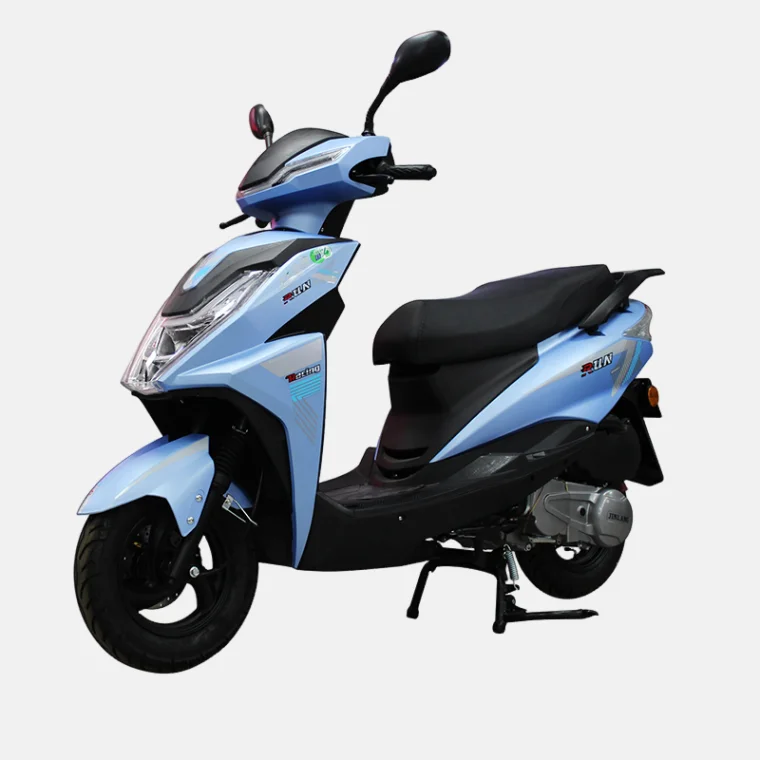- This topic is empty.
-
AuthorPosts
-
03/11/2025 at 14:37 #6193
With the rapid development of the domestic motorcycle market, gasoline motorcycles have become an important means of transportation for urban commuting, rural travel, and even leisure travel due to their flexibility, economy, and convenience. However, faced with numerous brands and models of gasoline motorcycles on the market, ordinary consumers often find it difficult to judge the quality of a motorcycle.
When choosing a gasoline motorcycle, many consumers often only look at the appearance, brand, or price, neglecting a more crucial factor—the actual quality of the vehicle. Quality directly affects driving safety, lifespan, and subsequent maintenance costs. This article will provide a professional analysis of key techniques for judging the quality of gasoline motorcycles, helping you make an informed choice when purchasing.
1. Observing the Appearance and Workmanship
The appearance of a gasoline motorcycle not only affects its aesthetics but also reflects the overall manufacturing quality. Professional judgment techniques are as follows:
Body Welding and Gaps: High-quality motorcycles have neat welds without obvious burrs, and the gaps are uniform and symmetrical. If the welding is rough, the gaps are uneven, or there are scratches, it may indicate poor quality control or the use of cheap materials.
Paint and Finish: Observe whether the paint surface is smooth and uniform, without bubbles, runs, or peeling. Poor paint quality not only affects appearance but may also indicate insufficient rust resistance.
Component Tightness: Check that handlebars, brake levers, pedals, and other parts are securely installed without any wobbling. Loose parts can pose a safety hazard while riding.

2. Engine: A Key Judgment Point
The engine of a gasoline motorcycle is the "heart" of the entire vehicle, and its quality directly determines power, fuel consumption, and durability. Professional judgment techniques include:
Inspecting the Engine Appearance: Check if the engine surface is clean, free of oil stains and rust. High-quality engines are generally finely crafted, with evenly tightened screws and no obvious scratches.
Starting Smoothness: When starting the vehicle, pay attention to whether the engine starts smoothly and without abnormal noises. Difficulty starting the engine or abnormal vibrations may indicate mechanical precision problems.
Operating Noise and Vibration: A high-quality gasoline motorcycle engine runs smoothly with moderate and even noise. If the engine vibrates excessively or produces abnormal metallic friction sounds, it may mean that internal parts are not properly fitted or are severely worn.
Fuel Injection and Emissions: Check the color of the exhaust smoke. A high-quality engine has normal exhaust color, indicating complete combustion. Blue or black exhaust may indicate high oil consumption or incomplete fuel combustion.
3. Chassis and Suspension System
The chassis and suspension system affect riding stability and comfort, and are crucial aspects of judging the overall quality of the motorcycle:
Check Frame Material
The frame is the key load-bearing component of the motorcycle and should be made of high-strength steel or aluminum alloy. While lightweight frames may save fuel, insufficient strength can reduce safety.
Suspension System Test
Check the elasticity and rebound of the front fork and rear shock absorber. Pressing on the frame should produce a smooth rebound without abnormal noises. Inferior shock absorbers may cause a bumpy ride, affecting handling.
Tires and Rim
Check the tire tread depth and rubber quality, and inspect the rims for cracks or deformation. High-quality tires and rims improve grip and riding stability.
4. Braking System and Safety Features
The braking system directly affects riding safety, so it must be a key focus when judging motorcycle quality:
Brake Type and Sensitivity
Check the front and rear brake types (disc brakes or drum brakes). Disc brakes generally provide stronger braking force. When testing the brakes, the response should be sensitive and the braking should be even, without any "sluggishness".
Brake Pad and Brake Fluid Quality: High-quality motorcycles use wear-resistant brake pads and high-grade brake fluid, which extends their service life. Soft brake pads or aged brake fluid may lead to reduced braking force.
Safety Features: Check for safety features such as rearview mirrors, anti-slip pedals, and bright lights. Comprehensive safety features reflect the overall design and quality level of the motorcycle.
5. Electrical System Inspection
Modern gasoline motorcycles are generally equipped with electrical systems such as electric start, instrument display, and lighting. Their stability is also an important indicator of quality:
Electric Start and Battery: The electric start should be responsive, the battery connection should be secure, and the voltage should be normal. A small battery capacity or a loose connection may lead to unstable starting.
Instruments and Lights: The instrument display should be accurate, and the lights should be bright and flicker-free. Electrical faults can easily affect riding safety and the user experience.
6. Test Ride Experience
Looking at the appearance and specifications is not enough; actual riding is the ultimate way to judge the quality of a gasoline motorcycle:
Acceleration and Power Performance: Observe whether the acceleration from a standstill is smooth and whether the power is sufficient when overtaking. Insufficient power or jerky acceleration may indicate an engine or transmission system problem.
Handling and Stability: Cornering, braking, and lane changes should be smooth and natural, without noticeable swaying or deviation. Poor handling usually indicates an inadequate chassis or suspension tuning.
Noise and Vibration: Pay attention to engine noise, exhaust sounds, and body vibration. Excessive noise or abnormal vibrations may affect long-term riding comfort.
7. Check Brand and After-Sales Service
Motorcycle quality is reflected not only in hardware but also in brand reputation and after-sales support:
Brand Reputation: Major brands typically offer better guarantees in manufacturing processes, quality control, and after-sales service. Learn about actual user experiences through online reviews and rider groups.
Warranty and Repair Network: High-quality motorcycles offer longer warranties and have a comprehensive repair service network. Inadequate after-sales service may increase later maintenance costs.
8. Summary of Professional Judgment Techniques
Judging the quality of a gasoline motorcycle requires considering multiple factors:
Appearance and Workmanship: Welding, paint finish, component tightness
Engine: Smooth starting, operating noise, fuel combustion
Chassis and Suspension: Frame material, shock absorption, tires and rims
Braking System and Safety: Brake sensitivity, brake pad material, safety features
Electrical System: Electric start, battery, electrical instruments and lights
Test Ride Experience: Power, handling, comfort
Brand and After-Sales Service: Reputation, warranty, service network
Mastering these professional techniques will allow you to quickly assess the actual quality of a gasoline motorcycle when purchasing, avoiding making a mistake. Furthermore, choosing a model based on your individual riding needs will allow the motorcycle to achieve optimal performance and safety.
In short, choosing a gasoline motorcycle involves more than just price and appearance; a comprehensive evaluation using professional methods is essential. By considering seven dimensions—appearance, engine, chassis, brakes, electrical system, test ride, and brand after-sales service—you can easily judge the quality of a motorcycle and ensure you buy a satisfactory and reliable model. As a professional supplier of gasoline motorcycles, Jilang is committed to providing high-quality motorcycles and accessories, and combines its rich industry experience to provide consumers with comprehensive purchasing guidance and after-sales support.
http://www.jilangmotor.com
jilangmotor -
AuthorPosts
- You must be logged in to reply to this topic.


